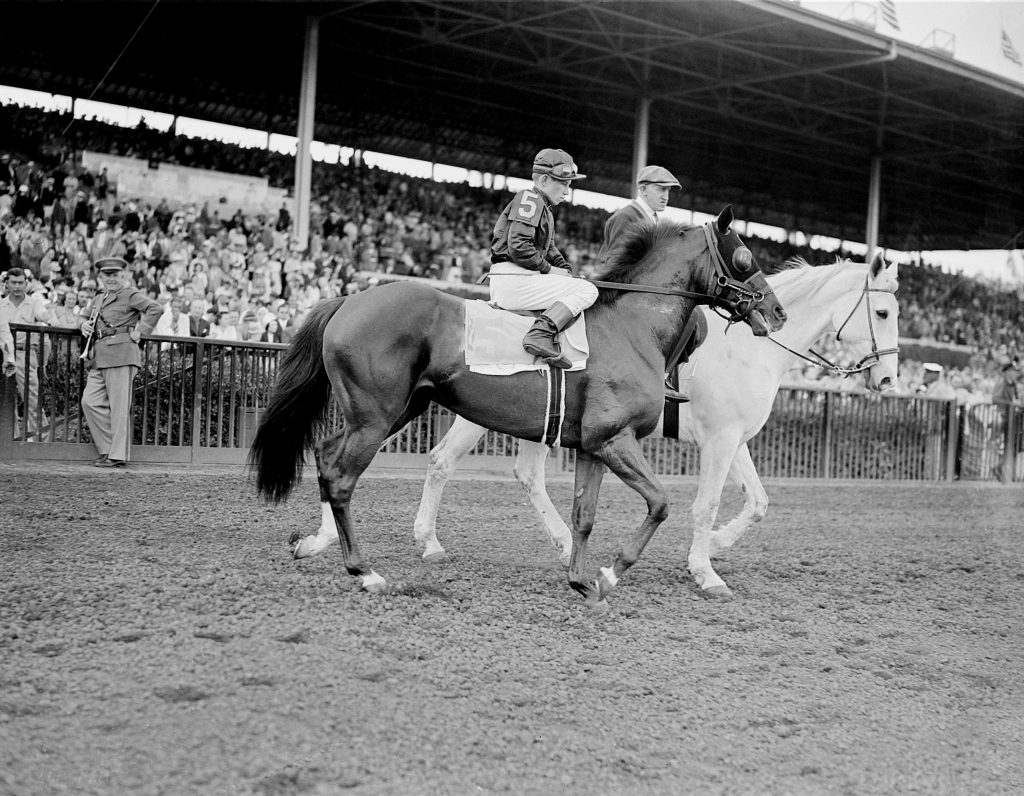
Wendell Eads On Whirlaway at Hialeah 1941
Photo Credit: Keeneland Library; Cook Collection
Is there anything greater than watching a horse win from off the pace?
As the horses round the turn and enter the homestretch, one or two horses usually have command of the race. They vie for the lead, and it may be close with a sixteenth of a mile to go. But out of nowhere, sprinting like a quarter horse, is a horse who was last earlier in the race—an afterthought, really.
The crowd, now on the edge of their seats, immediately stands up, clutching their tickets and screaming as the closer runs like the rest of the pack is standing still. The only question is: Is it too late for such a comeback?
The leaders strain for the finish line, slowing with every stride, but the closer has too much in the tank and crosses the line a half-length or a neck in front. People with the winning ticket whoop with delight at their good fortune, while others tear up their tickets, knowing that they missed out on their prize by a half a second.
In a horse race, somebody has to take the lead and set the pace. If it’s a slow pace, that horse may stick around and win it. If it’s a fast pace, though, you should watch for a horse at the back of the pack, sometimes a dozen or so lengths behind, biding their time patiently. When the leaders have expended their energy, the closer comes from off the pace to challenge for the lead and—sometimes—win the race.
What makes a good closer?
Dr. Fager was born to be a pace-setter. Writer Steve Haskin quotes jockey David Hidalgo as saying in Dr. Fager’s first race, he stood on the horse “like a water skier just to keep him from running over tops of horses.”
Closers, though, are a special breed. They have to time the attack just right and use all their fuel before they get to the finish line. Too late, and they risk a second or third-place showing; too soon and their gallant comeback stalls at the end.
“Pedigree has something to do with the horse as a closer,” said trainer Michael Cameron. “But you can usually tell when a horse gives his best speed toward the end of the work whether he’s going to be a strong closer or not.”
There are some risks. Closers usually hate the mud. As they languish far in the pack, they get mud from a dozen horses splashed on their face and chests. Some just don’t respond well to that. Others can’t find running room on the far turn and have to go six or seven horses wide to find a clear path to the wire. That makes their trip longer and their quest that much tougher.
Famous Closers in Horse Racing History
- Whirlaway, the 1941 Triple Crown champion, had a mind of his own, sometimes reeling out to the far rail as the horses rounded the far turn and running by himself. This technique cost him wins in the Blue Grass Stakes and Derby Trial, but a new set of blinkers and a seasoned ride by the great Eddie Arcaro settled him down for the Kentucky Derby. At one point 15 1/2 lengths behind, Whirlaway started making up ground on the leaders, passed them with a furlong to go and won going away by eight lengths.
- Native Dancer, the “Gray Ghost,” mesmerized fans with his thrilling, come-from-behind wins. Sadly, he got off to a rocky start in the 1951 Kentucky Derby and his patented move came up short. He lost by a neck to Dark Star—the only race he ever lost in 22 starts.
- Needles was the favorite going into the 1956 Kentucky Derby, but a half-mile into the race, he was in 16th place, 23 ½ lengths off the pace. He put on a burst of speed, though, outran Fabius at the wire, winning by ¾ of a length. Fabius got his revenge in the Preakness, but Needles won the war with a performance in the Belmont Stakes that mirrored his Derby win.
- Zenyatta caused her fans much anguish as jockey Mike Smith usually waited until the very last minute to unleash her. But the strategy worked 19 times in a row, including a win over the boys in the 2009 Breeders’ Cup Classic. In her last race, the 2010 Classic, Smith started to move her a fraction of a second too late, and she came up a nose short as Blame defeated her at the wire.
- Winx always seemed to come from nowhere during her 33-race winning streak. The Australian filly was sometimes still at the back of the pack when the horses turned for home. It made for some close calls, but it worked for her as the superhorse became the stuff of legends, becoming the first horse in history to win the prestigious Cox Plate four times.
Coming next: Here Comes Malicious!



